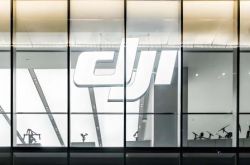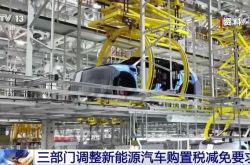Future Industrial Layout of 26 Trillion-Yuan Cities and Analysis of Representative Cities
![]() 01/07 2025
01/07 2025
![]() 682
682
The vigorous development of future industries represents a strategic choice aimed at leading scientific and technological progress, driving industrial upgrading, and nurturing new productive forces. At the start of 2024, seven departments, including the Ministry of Industry and Information Technology, issued the "Implementation Opinions on Promoting the Innovative Development of Future Industries." This document outlined six key industrial directions for future manufacturing, future information, future materials, future energy, future space, and future health, with a focus on creating ten iconic innovative products, such as humanoid robots.
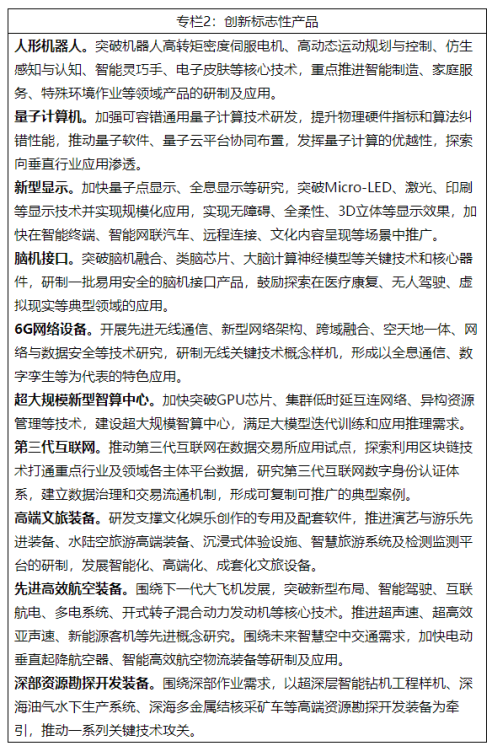
The Central Economic Work Conference held at the end of 2024 made it clear that the "AI+" initiative would be launched in 2025 to foster future industries. Recently, various cities have successively begun taking action, planning the development of future industries for the new year. For instance, Hangzhou issued the "Hangzhou Future Industry Cultivation Action Plan (2025-2026)," outlining the establishment of over ten municipal future industry pilot zones within the next two years, adopting a "core area + linkage area" model.

Overview of the Future Industrial Layout of Trillion-Yuan Cities
From an urban perspective, the 26 cities with trillion-yuan GDP are the primary drivers in the layout of future industries. Data indicates that nearly all 26 trillion-yuan cities are involved in future industry planning, with at least 16 cities having issued plans or programs for future industry development, including Beijing, Shanghai, Shenzhen, Guangzhou, Chongqing, Suzhou, Chengdu, Hangzhou, Wuhan, Nanjing, Tianjin, Ningbo, Qingdao, Wuxi, Fuzhou, and Hefei.
Table: Future Industry Track Layout of 26 Trillion-Yuan Cities
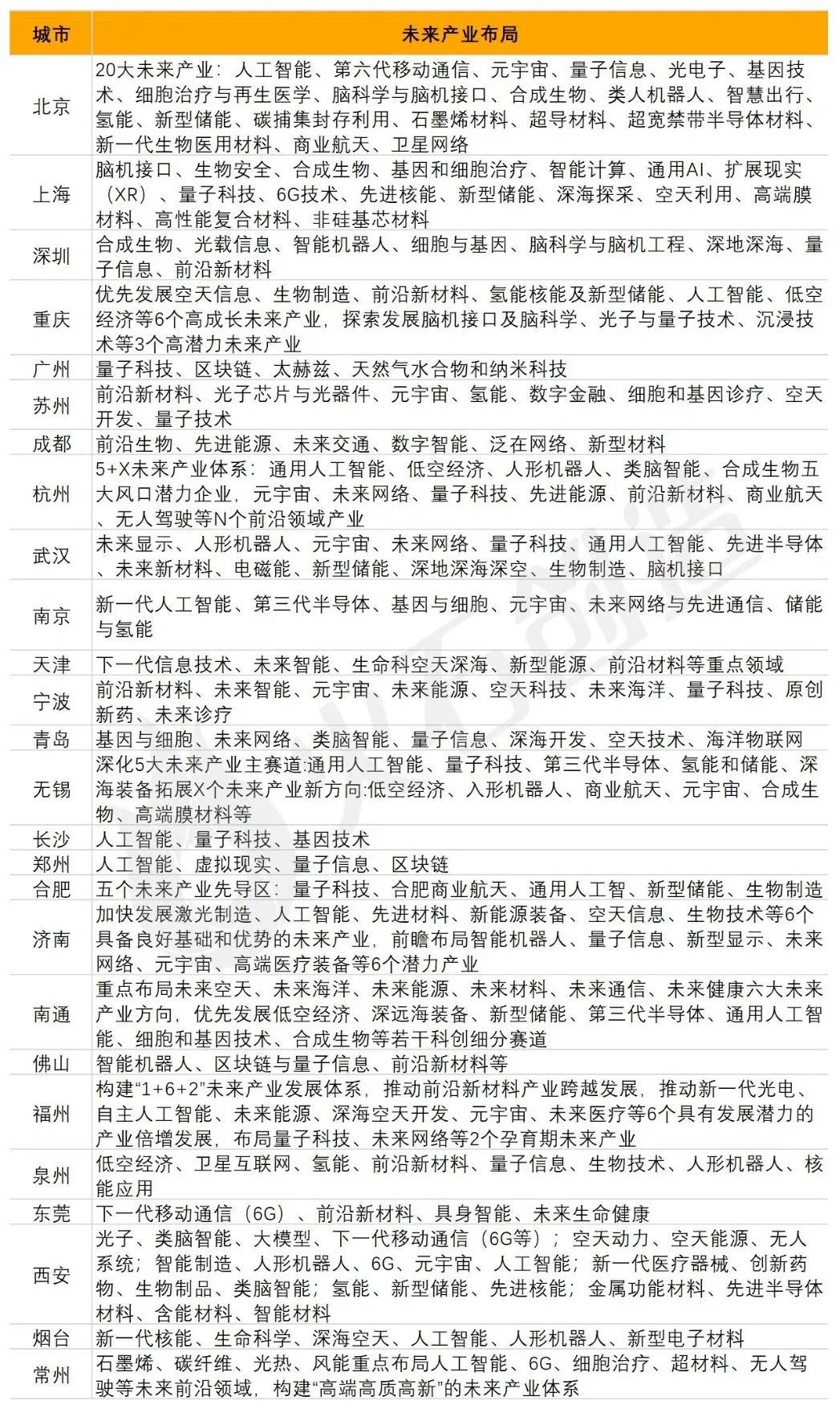
Source: Compiled by Huoshi Creation based on public information
For future industry data, visit the Huoshi Creation Industry Data Hub????


Analysis of the Future Industrial Layout of Typical Cities
Beijing
In 2023, Beijing issued the "Implementation Plan for Promoting the Innovative Development of Future Industries in Beijing," targeting six key areas: future information, future health, future manufacturing, future energy, future materials, and future space. The plan implements eight major actions to seize the initiative in future industry development and create a world-leading hub for future industries.
Table: Beijing's Future Industry Track Layout
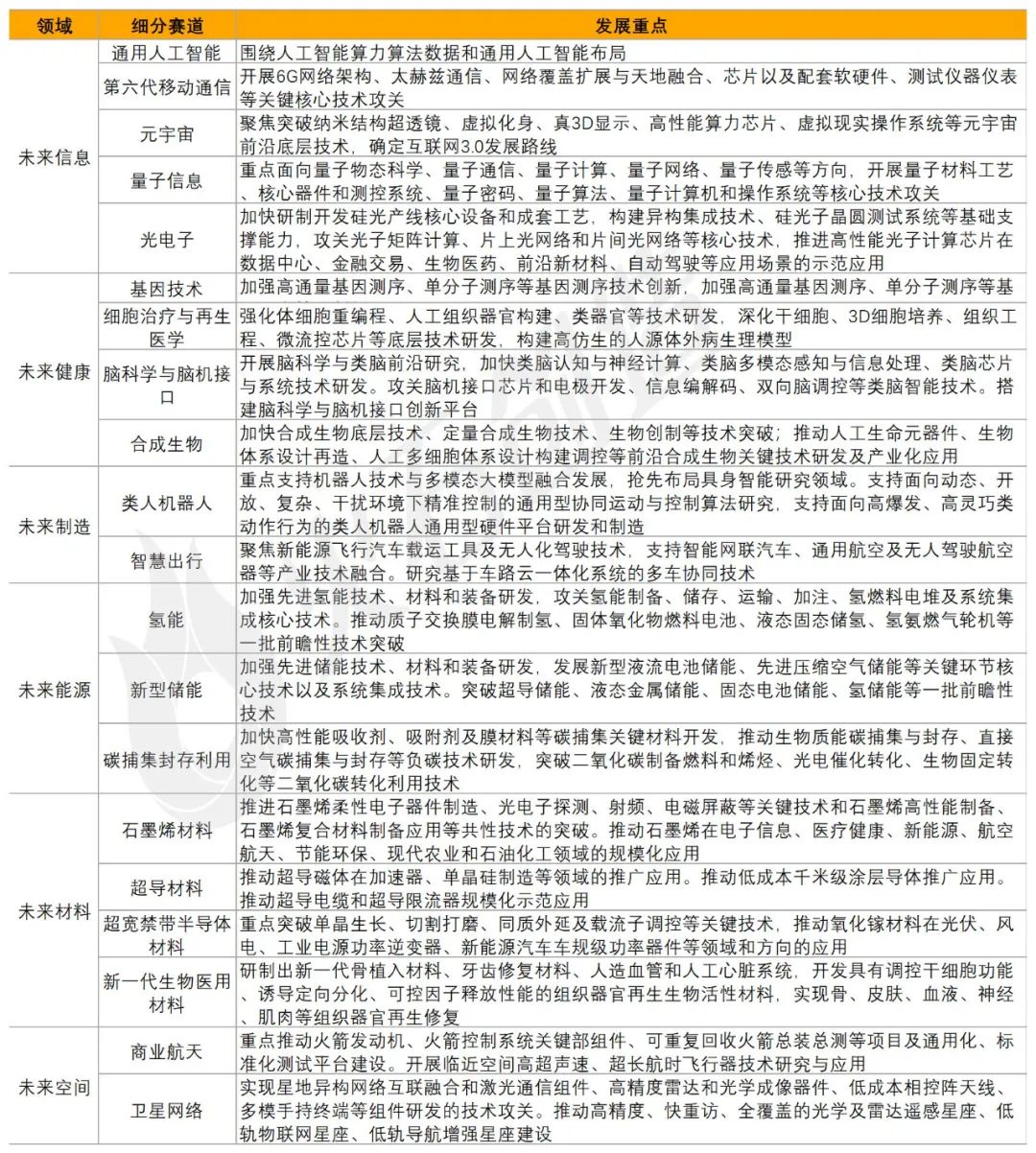
Source: Compiled by Huoshi Creation based on public information
In terms of spatial layout, Beijing has selected advantageous areas to establish several future industry clusters, with each district designated as a core area for future industries. For example, Haidian District will focus on the four main areas of future information, future health, future materials, and future space. The Economic and Technological Development Zone will develop new productive forces based on its existing industries and comprehensively deploy the six major future industries.
Table: Beijing's Future Industry Regional Layout
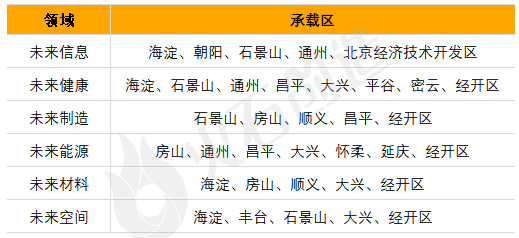
Source: Compiled by Huoshi Creation based on public information
Shanghai
Shanghai is one of the earliest cities in China to plan for future industries. In 2022, it issued the "Shanghai Action Plan for Building a Future Industry Innovation Hub and Developing and Expanding Future Industry Clusters," firing the first shot in the country's future industry layout. The plan aims to create five major future industry clusters in future health, future intelligence, future energy, future space, and future materials, focusing on 16 subdivisions such as brain-computer interfaces, synthetic biology, and new energy storage.
Table: Shanghai's Future Industry Track Layout
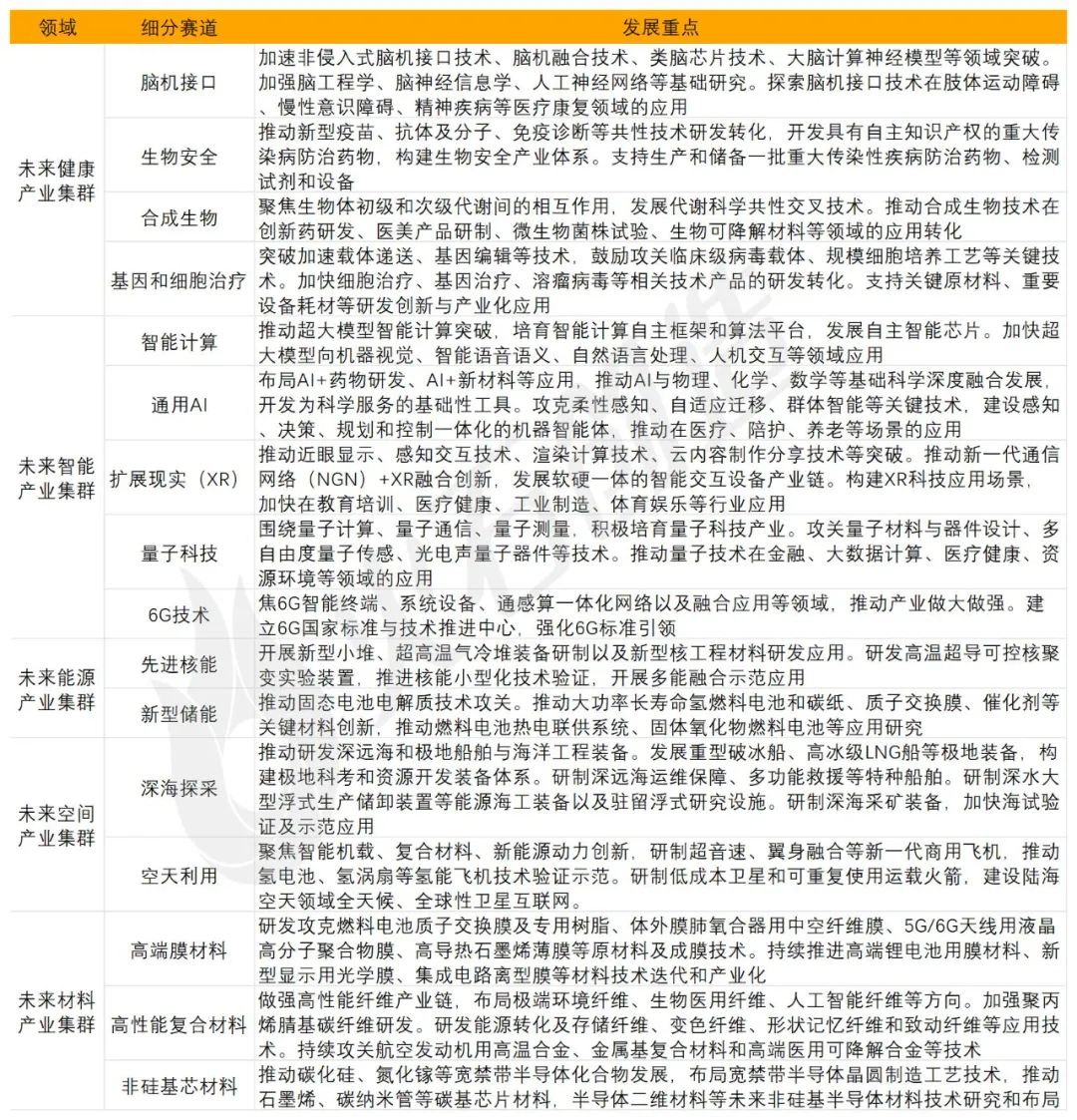
Source: Compiled by Huoshi Creation based on public information
In 2023, Shanghai took the lead in establishing the first batch of three future industry pilot zones in Zhangjiang, Lingang, and Dalinghaowan, aiming to achieve future industry scales of 200 billion yuan, 100 billion yuan, and 100 billion yuan, respectively, by 2030.
Table: Shanghai's Future Industry Regional Layout

Source: Compiled by Huoshi Creation based on public information
Among these, Zhangjiang Science City adopts "AI" as the core technical route, evolving intelligently through the integration of "cerebellum, brain, and cloud brain," emphasizing the development of humanoid robots. Lingang, through the construction of the "Dishui Lake AI Innovation Port," aims to create a significant cluster for future intelligent industries. Additionally, it focuses on tracks such as general robots, industrial robots, and service robots, introducing projects like Zhiyuan humanoid robots and CRRC Eisenmann underwater robots. In the future health industry, the Lingang New Area strengthens its layout in genetic and cellular therapy, antibody drugs, synthetic biology, brain-computer interfaces, AI assistance, and high-end medical imaging. The Dalinghaowan pilot zone concentrates on the three main directions of future intelligence, future energy, and future space. The future intelligence direction primarily focuses on areas such as smart chips, quantum computing, and intelligent robots.
Shenzhen
In 2022, Shenzhen issued the "Opinions on Developing and Expanding Strategic Emerging Industry Clusters and Cultivating and Developing Future Industries," clarifying the key development directions for eight future industries, including synthetic biology, blockchain, cells and genes, aerospace technology, brain science and brain-like intelligence, deep earth and deep sea exploration, visible light communication and optical computing, and quantum information.
Table: Shenzhen's Future Industry Track Layout
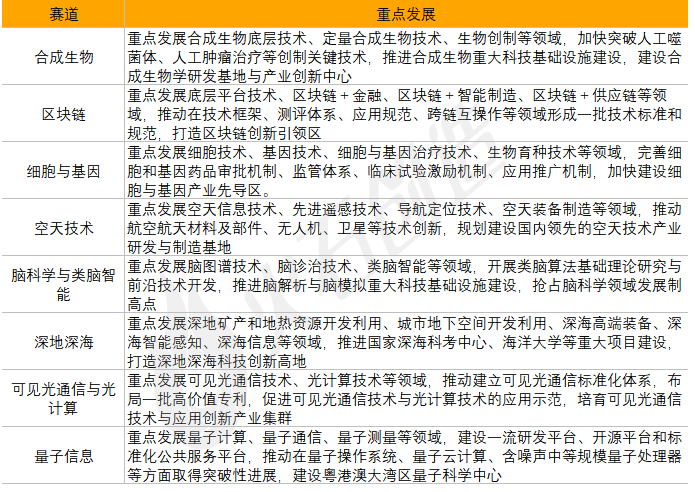
Source: Compiled by Huoshi Creation based on public information
In terms of spatial layout, Shenzhen has designated 20 advanced manufacturing parks across eight districts, including Bao'an, Longgang, Longhua, Pingshan, Guangming, Yantian, Dapeng New Area, and Shenshan Special Cooperation Zone, guiding the concentrated layout of manufacturing links for strategic emerging industries and future industries.
Table: Manufacturing Link Bearing Areas for Shenzhen's Future Industries
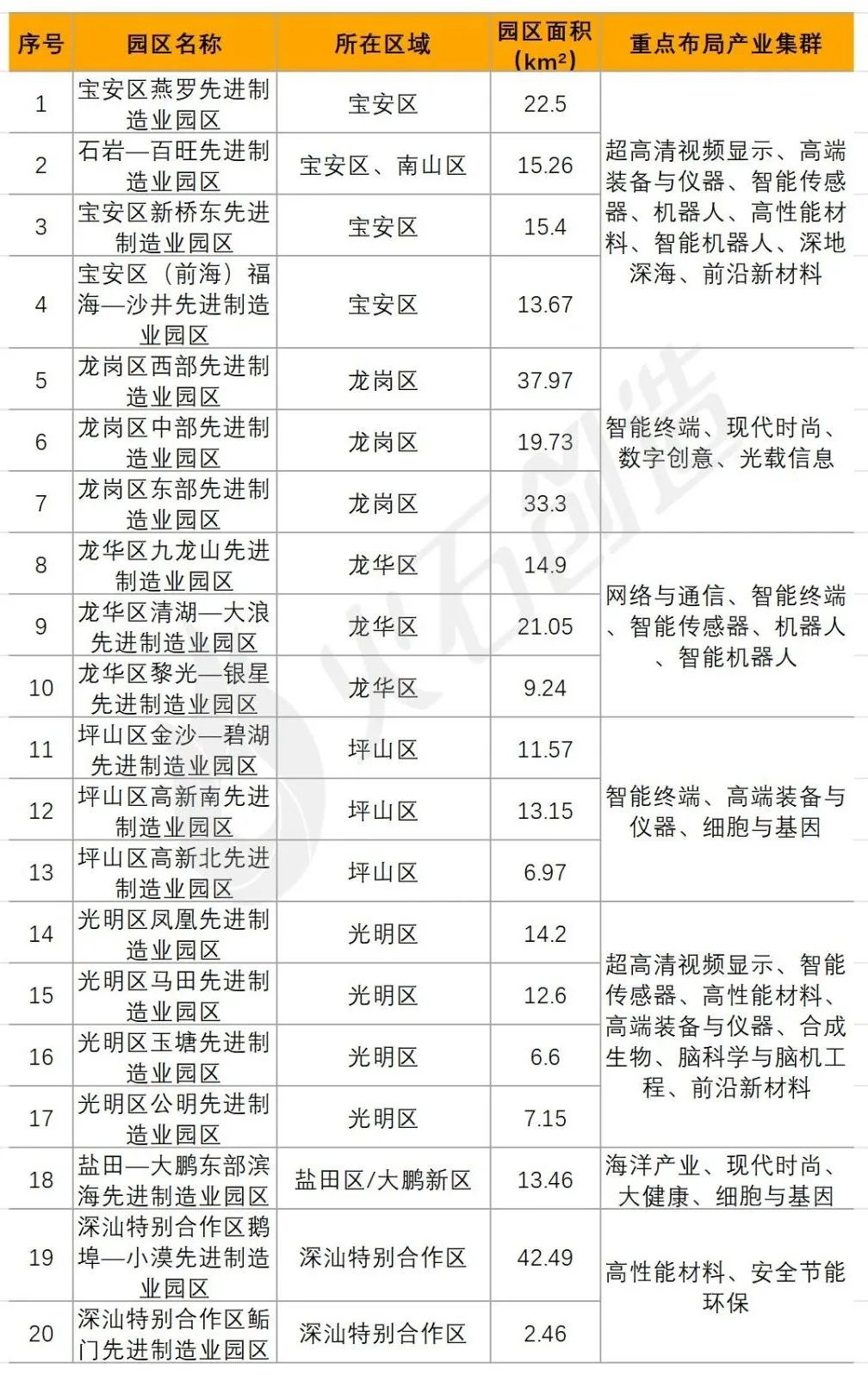
Source: Compiled by Huoshi Creation based on public information
Guangzhou
According to the "14th Five-Year Plan" for the Development of Strategic Emerging Industries in Guangzhou, the city focuses on five directions: quantum technology, blockchain, terahertz, natural gas hydrates, and nanotechnology, to cultivate future industries, aiming to become a globally significant source of future industries.
Table: Guangzhou's Future Industry Track Layout
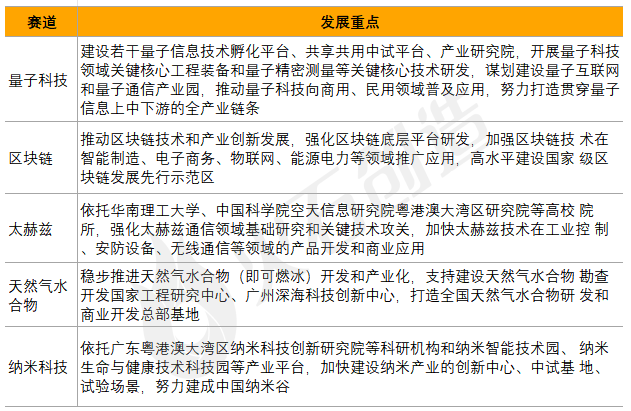
Source: Compiled by Huoshi Creation based on public information
In terms of regional layout, Tianhe District focuses on future industries such as blockchain, natural gas hydrates, and quantum technology. Huangpu District emphasizes blockchain, nanotechnology, and terahertz, while Huadu District concentrates on blockchain and artificial intelligence industries.
Table: Guangzhou's Future Industry Regional Layout
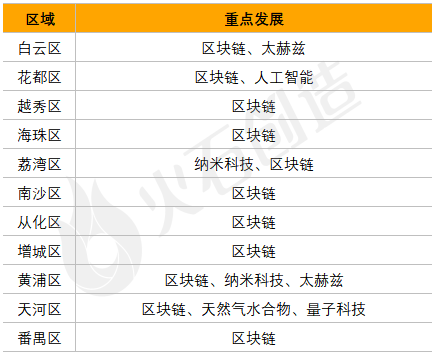
Source: Compiled by Huoshi Creation based on public information
As representatives of the development trajectory of the new round of scientific and technological revolution and industrial transformation, future industries to a certain extent determine the future competitiveness of cities. Currently, future industries are becoming a must-have sector for major cities, with competition intensifying. Therefore, preventing inward-looking competition is a critical issue in the layout of future industries.







